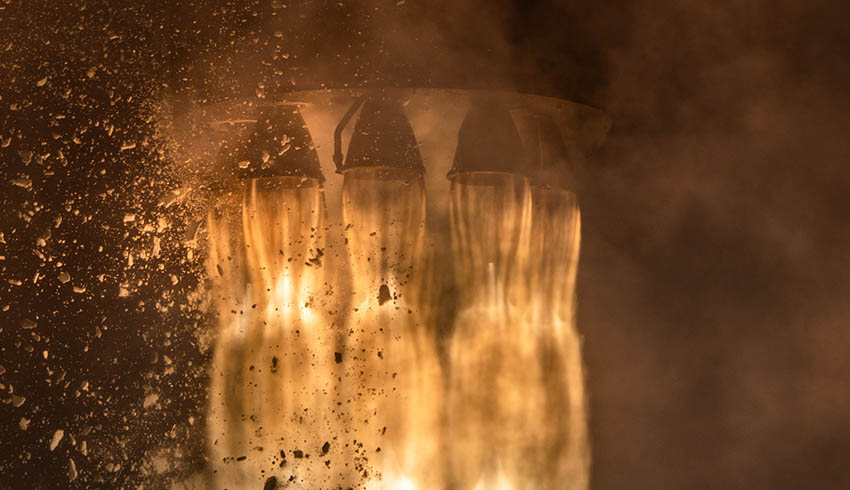That’s a capability more commonly demonstrated in science fiction movies but isn’t totally novel as SpaceX conducted similar trials with its Grasshopper reusable launch vehicle in 2012-13.
This was the third low altitude untethered launch for LinkSpace Aerospace Technology Group’s RLV-T5 tech demonstrator and was conducted late last week. Earlier tests reached heights of 20 metres and 40 metres.
LinkSpace is aiming to develop a reusable orbital launch capability. In the test, their 8.1-metre tall, 1.5-tonne rocket reached an altitude of sightly over 300 metres then makes a powered tail first descent, landing on the launch pad with an accuracy of 7 centimetres, according to LinkSpace chief executive officer Hu Zhenyu on the Chinese twitter-like service Sina Weibo.
"This is a new milestone in China's reusable rocket research," LinkSpace vice president Wan Mei told the China News Service.
This latest test was conducted at a new facility in the Lenghu region of Qinghai province in China’s north west.
The RLV-T5 rocket is reportedly powered by five variable-thrust rocket engines powered by ethanol and liquid oxygen, the same propellant combination to power Germany’s World War II V2 rockets.
LinkSpace next plans to conduct a trial to reach a kilometre altitude, before moving on to test the larger RLV-T6 technology demonstrator rocket.
A full test of the company’s NewLine-1 orbital launcher, set to carry a 200-kilogram payload to a 500 kilometre orbit is planned for 2021.
LinkSpace is China's first private space company. It launched its first rocket in October 2018, named ZQ-1 which carried a small satellite for state broadcaster China Media Group, from the Jiuquan Satellite Launch Centre in China's Gansu province. SpaceX has used its hovering rocket technology to recover and reuse the first stages of its Falcon 9 rockets.
Previously, all launch activities in China were conducted by the Chinese state and military.
But in 2014 the Chinese government changed its approach to space activities and startups began emerging, assisted by policies which allowed transfer of restricted technologies to approved companies to promote innovation.
That launched a blizzard of new space startups, among them StarCraft Glory, Blue Arrow Space, Zero Space, Hacker Space, Deep Blue Space and Star Way Exploration.

